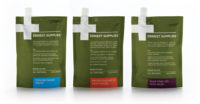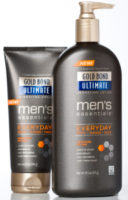Aspire to Pamper Men

Aspire to Pamper Men
by William Makely
Many personal-care marketers are targeting men. But they see a lot of different targets—from ‘regular guys’ to ‘metrosexuals.’
To paraphrase an industry expert, “Everybody’s doing it,” the “it” being marketing a men’s line of personal care products, from shampoo to skin care.
Evolving from the old practice of “I’ll use whatever’s in the bathroom,” men are now seeking their own products, and marketers are eager to accommodate them. As a result, this segment is the fastest-growing piece of the personal care marketplace, at $4.5 billion in 2003 and projected to reach $5.5 billion by 2006.
One explanation offered for why men have taken this interest—in fragrances, for instance—is a growing recognition of their “softer” side. The growing prevalence and acceptance of therapy, the acceptability of displaying emotions, wider choices in business dress—all can be seen as reflecting this softer side.
Lancôme has even researched skin characteristics and identified eight differences between men’ and women’s skins, adding a scientific component to the new awareness.
Until the past five years or so, relatively few male personal care products were available. For our fathers and older brothers, “fragrance” meant aftershave. And shampoo was for the whole family, not just females. But today, there is an explosion of personal care products targeted specifically to men.
Until the past five years or so, relatively few male personal care products were available. For our fathers and older brothers, “fragrance” meant aftershave. And shampoo was for the whole family, not just females. But today, there is an explosion of personal care products targeted specifically to men.
And they appear in the marketplace—in most cases—in distinctively male packaging to capture men’s attention. Department stores have begun allotting more space to men’s grooming products (some Target Stores, even have a separate section), though in grocery stores, men’s products (except for shaving products) are still on the family shelves.
But not every marketer is taking the same approach. Men differ in their expressed needs, and companies differ in their strategies to capture these relatively new, still not completely categorized consumers.
|
‘Regular Guys’ Versus ‘Metrosexuals’
The extremes seem to be the “metrosexual” and the “regular guy”—two self-images that differ radically in some aspects and not at all in others. The metrosexual is “discriminating” when it comes to personal care products: he wants a distinctive scent, a shampoo made just for his male physical needs and a wide choice of products.
Sometimes labeled a peacock, the metrosexual is comfortable about revealing his feelings, emotionally available to his partner(s) and has a regular routine of grooming. In a recent Market Probe International study, 89 percent of men surveyed said good grooming is essential to success in business.
This is the man for whom Lancôme launched its Homme line of skin care products. They range from basic skin care formulas to a treatment for removing dark circles from under the eyes and a Relax Mask for soothing the entire face.
Lancôme balances the “feminine” side of skin. Its masculine packaging features cylindrical shapes, sharp edges, dark colors and practical dispensers. Advertising featuring British soccer star David Beckham backs the packaging’s marketing message.
A regular guy, on the other hand, is generally more interested in basic products like shampoo and conditioner rather than a full line of treatments. He wants to know up front what each product will do for him.
Alberto-Culver’s Consort line targets this segment unabashedly. Its “Save the Regular Guy” Web site features guy jokes, surveys and other clubby elements. Much of the thrust here is toward saving the regular guy from becoming metrosexual.
A commentary by spokesman sportscaster Dan Patrick, for instance, admonishes his audience to “slap your inner child and get back to being a regular guy.”
A commentary by spokesman sportscaster Dan Patrick, for instance, admonishes his audience to “slap your inner child and get back to being a regular guy.”
This is also the male audience for JOE Grooming products, with uncluttered packages carrying minimal, no-nonsense text. Bottles and tubes are white with black type. Color was recently added to the packaging, but only in small bars used to code products that are packaged in otherwise identical white tubes.
Suave, on the other hand, packages its Suave For Men line of hair-care products in dark colors—blue and green plastic bottles with a pearlescent finish. Focus-group research revealed men tend to value and select darker colored packages.
Text again is direct and minimal. Suave’s Allison Harmon points out that the term “volumizing,” for instance, has no meaning for men. Suave replaces this with “makes hair thicker.” Deep cleaning shampoo is “the right tool to thoroughly clean and remove build-up.”
All Suave hair products for men have a “fresh clean masculine scent,” since men in focus groups indicated they didn’t want to smell feminine.
All Suave hair products for men have a “fresh clean masculine scent,” since men in focus groups indicated they didn’t want to smell feminine.
Using Shape and Color
Between these two extremes of metrosexual and regular guy, there is a continuum of male images—self-images in the minds of men customers and projected images from marketers. It includes a broad range of interpretation as to what masculinity is and wants. Not surprisingly, the result is a variety of package designs.
Product Ventures Ltd. rejuvenated Procter & Gamble’s Old Spice brand with a redesigned deodorant package targeted to what P&G sees as an emerging market segment: the image-conscious young male. Not quite metrosexual but more image-conscious than the regular guy.
According to Product Ventures Vice President of Design & Development Javier Verdura, the challenge was to appeal to the “hip” new guy while not totally abandoning the branding of the existing Old Spice line. P&G also wanted a package that would run on the company’s existing filling lines.
Color as Brand Identifier
The final design for the new Red Zone line keeps the “Old Spice red” and the familiar ship logo. A two-stage injection-molding process adds a slick grey arch over the body that gives the package an upscale, sophisticated look and a vibrant, streamlined “feel.”
Color is critical in shelf presence. Suave chose dark colors for its men’s shampoo products and bright red for its men’s body wash product. Research indicated that men preferred solid conservative colors. Procter & Gamble chose to retain its Old Spice red because the color hue carries a lot of equity for the brand.
Products directed at ethnic markets, however, take a different tack with color. Alberto-Culver’s Motions line of hair-care products, targeted to African-American consumers, features rich yellow packages decorated with purple closures and graphics.
“Ethnic products, in general, take more risks with color in their packaging,” says Carol Rodgers of Clariant Masterbatches. There is greater contrast between body and closure, for instance, as opposed to the color-matching look many mainstream products seek.
Interestingly, there seems to be little or no differentiation in appeal to men or women in ethnic product packaging. This suggests that the ethnic appeal trumps—at least for now—the male appeal.
Motions, which began as a salon product 10 years ago, was recently introduced for home use as Motions at Home. It is appearing on store shelves in mass-market outlets, where it is being credited with attracting more traffic to ethnic sections.
In the Hispanic market segment for men, Just For Men hair colorant has rolled out a product for Hispanic men. Known as Castano Negro Oscuro, or Darkest Brown Black, the new shade is darker than the brand’s existing Dark Brown Black hair color offering and contains conditioners to leave hair softer and healthier looking.
Research showed the company that Hispanic men take a different approach to coloring their grey hair. They do it primarily to feel better about themselves (as do most Just For Men users). But they seek their validation from their families and friends, rather than in relation to dating and to work.
The packaging for the new product is no different from the remaining Just For Men line. It carries a photo of a Hispanic man on the face of the secondary packaging and the addition of Spanish text.
But if these ethnic products follow the path of mainstream personal care products, the next few years will see a gradual trend toward separate branding for men.
What’s Next?
The movement in this marketplace seems to be toward diversity: widely different brand identities targeting different concepts of masculinity. And that is probably an accurate reflection of the self-images of males today.
To tap the growing men’s market for personal care products, marketers will seek to identify new and narrower niches within the broad male target.
To tap the growing men’s market for personal care products, marketers will seek to identify new and narrower niches within the broad male target.
The author, William Makely, has written extensively on packaging and technology. Contact him at billmakely@aol.com
Looking for a reprint of this article?
From high-res PDFs to custom plaques, order your copy today!







